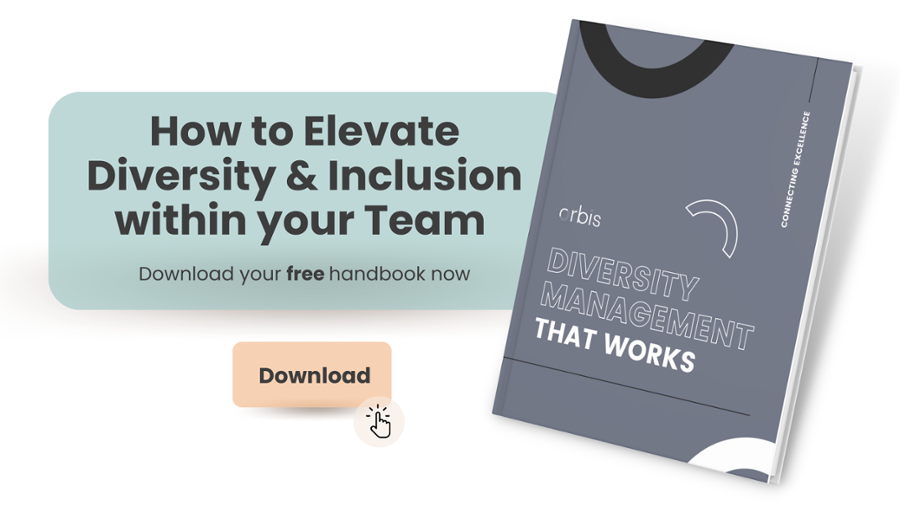
When was the last time you took a good look at the diversity of your organization? How can you make an effort to really improve your D&I?
Collecting data is an insightful way to identify areas where your organization can improve. Diversity and Inclusion has become an important topic of discussion for companies in the last few years, and leaders want to know how they can improve.
Many companies have begun collecting D&I data to better understand where their company falls and how they can improve their D&I efforts.
D&I data collection includes areas such as age, gender, ethnicity, sexual orientation, marital status, education level, disabilities, caregiver status, veteran status, and parental status. It’s also ever-changing, and new data points can arise at any time.
Why is it important that we collect this information as a company, and how can your workplace go about collecting this data in a respectful and effective way?
Why is it important to collect D&I data?
D&I has become an important part of today’s working culture, and you want to make sure that your company isn’t behind the times. In order for your organization to make necessary changes, you must identify the areas where you’re struggling first.
Measurement and awareness are the first steps towards making actionable change.
Employees who are passionate about D&I will appreciate the efforts your organization is making as well. Companies who participated in the USV Network Diversity, Equity and Inclusion survey stated that collecting D&I data helped their companies demonstrate that this information was important to them and gave a perspective on where they were currently and what to work towards in the future.
According to the Harvard Business Review, having a more diverse workforce leads to better business performance, customer loyalty, and employee trust and retention. A more diverse organization is inherently stronger and has fewer blind spots.
Most companies know that this is true, but it can be easy to think your own company is doing a great job with D&I due to the unconscious bias you have working there. If you’ve been working somewhere for a long time, it’s harder to “zoom out” and view your organization through an unbiased lens.
If you enjoy your workplace, you may not realize some of its shortcomings, especially if they don’t directly affect you. D&I data can reveal some uncomfortable truths and weaknesses within your organization that you’d otherwise be unaware of.
How can you effectively collect this data within your organization?
Not everyone is comfortable sharing their personal information, so it’s important you allow people to opt-in. Explain to them why you’re collecting the data. If people understand that it’s to their benefit, they’ll be more likely to participate.
Let your employees know the benefits of D&I data collection. The more your company knows, the better it can help its employees.
Say, for example, that there are a lot of working parents within an organization. If a company is made more aware of this through statistics, leaders might decide to make working hours more flexible surrounding school pickup times.
You could consider making responses pseudonymous. Some organizations assign a random code number for each employee and record responses that way. They do this instead of making surveys anonymous so that when an employee leaves, their D&I data can also be deleted and won’t be accounted for in future numbers.
Make sure your employees understand that their participation in the survey is voluntary, and their information won’t be identifiable to them.
In terms of logistics, you know the best method of communication for your company. If employees are most active on Slack or Teams, consider sending the survey out there.
Otherwise, your best bet is probably an email to your team members. Remember to be sensitive and open to any questions that they may have.
What do you do once you have the data?
Make sure you don’t fall into the trap of “vanity metrics”. D&I data can be used to make a real, actionable change if you use it correctly. Are you hiring people of colour and LGBTQ+ individuals in all positions in your business, including senior leadership roles? Are you hiring people of all genders in a wide range of departments?
It can be tempting to skew numbers to make your team look good and pat yourselves on the back, but that’s not the objective behind collecting D&I data. Really take the time to interpret what your data means and how you can make impactful changes.
Above all, make sure your efforts in collecting D&I for Talent Management are well-intentioned and aimed towards making change within your company. Current and prospective employees alike can tell when an organization is being performative, so you want to stay away from less than genuine D&I efforts and/or tokenism.
Collecting this data is an awesome step for your organization to take, and can lead to greater understanding and progress within your company. Your employees will appreciate the effort, and you’ll be able to identify blind spots you’d previously been unaware of.
After all, you can’t work towards making changes until you identify and accept the problems you’re facing.



